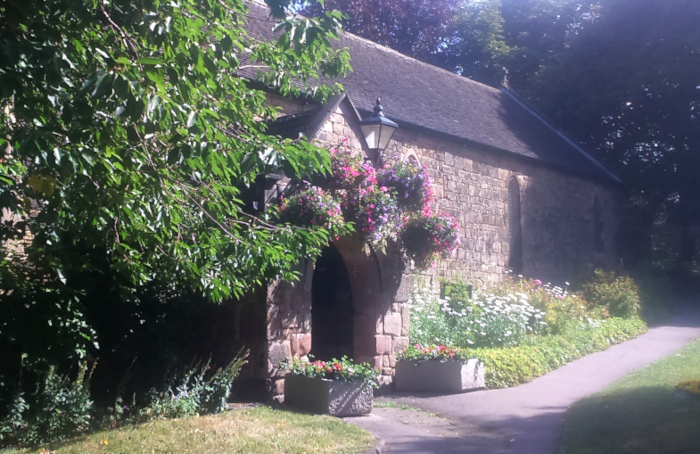
History & Heritage
As part of the Derwent Valley Mills UNESCO World Heritage site, Belper played a crucial role in the birth of the Industrial Revolution. You'll see evidence of that heritage all around you: britishlistedbuildings.co.uk records 256 listed buildings and structures in Belper.
But Belper's story began long before the mills came...
Stepping Back in Time
The Derbyshire Portway is an ancient track that crosses the county, and is believed to have existed since the bronze age. The section that passes close to Belper is fairly well defined, following the ridge of the Chevin along North Lane from Milford to Farnah Green, and then continuing along Longwalls Lane. There's evidence that it was used extensively during the Roman occupation, and subsequently became an important pack horse route. Today it is popular with walkers, and offers a spectacular view over the town.

You can find more information on the route, including the Belper section, on this site: hiiker.app/trails/england/nottinghamshire/derbyshire-portway/stages.
You can also find more information at Stephen Bailey's excellent website here: https://oldroadsofderbyshire.com.
Beautiful Retreat
By the thirteenth century, Belper - then known as Beaurepaire, meaning "beautiful retreat" - was part of the Duffield Frith, owned by the de Ferrers family. Nail making was one of the chief industries of the area, which is why you will frequently see references to nails around the town, and why the "Nailers" is the nickname for Belper Town Football Club.
The oldest building in Belper, St John's Chapel, dates from this time. It is currently a heritage centre and is used by the town council.

For more about Belper's nailing industry visit: https://belperhistoricalsociety.co.uk/nailing-in-belper
Cotton Town
It was the industrial revolution, in which Belper played such a pivotal part, that turned a rural settlement into the busy town you see today. In 1776, Jedediah Strutt built the first of his mills, South Mill, harnessing the River Derwent to drive the machinery for his cotton production. It was the start of a long association between the town and the textile industry.

Today Belper Mills and the adjacent river gardens are a popular destination for visitors. You can find out more about the mills and their history here: www.belpernorthmill.org.uk. You'll also find information about tours and events.

Channels
Elsewhere they may be called jitties, ginnels or twitchels, but in Belper these narrow pedestrian alleyways are traditionally known as "channels". We've created a map of them here:
To find out more about Belper's channels, check out this excellent article on The Belper Historical Society's website.
Many of the buildings you see around town today were built by the Strutt family, helping to give the town its distinctive character. For instance, there are the mill worker's houses on long row and the "clusters" in the adjacent streets - so called because they each is a cluster of four houses back-to-back.

If you're interested in finding out more about Belper's history, these websites will be useful:







